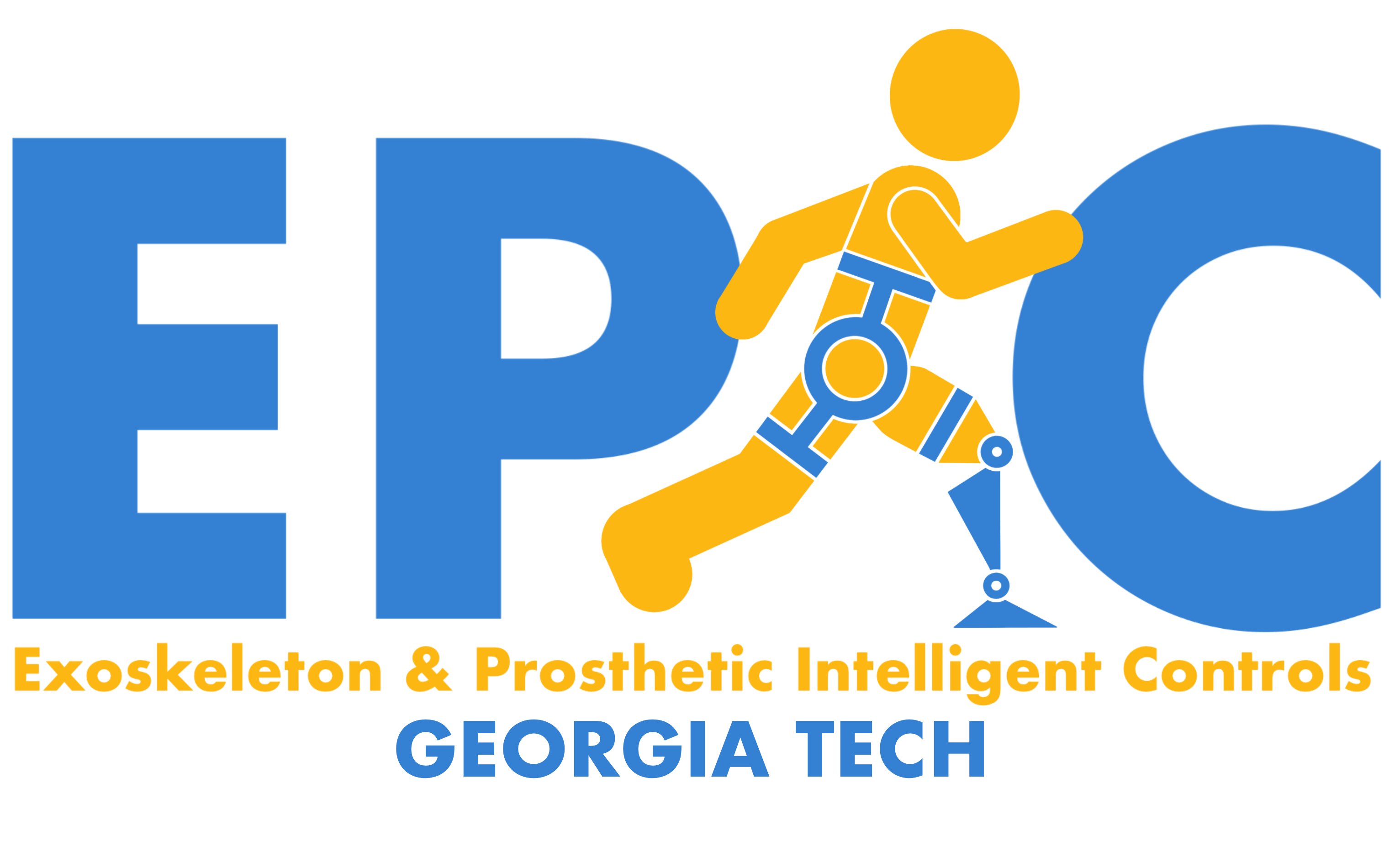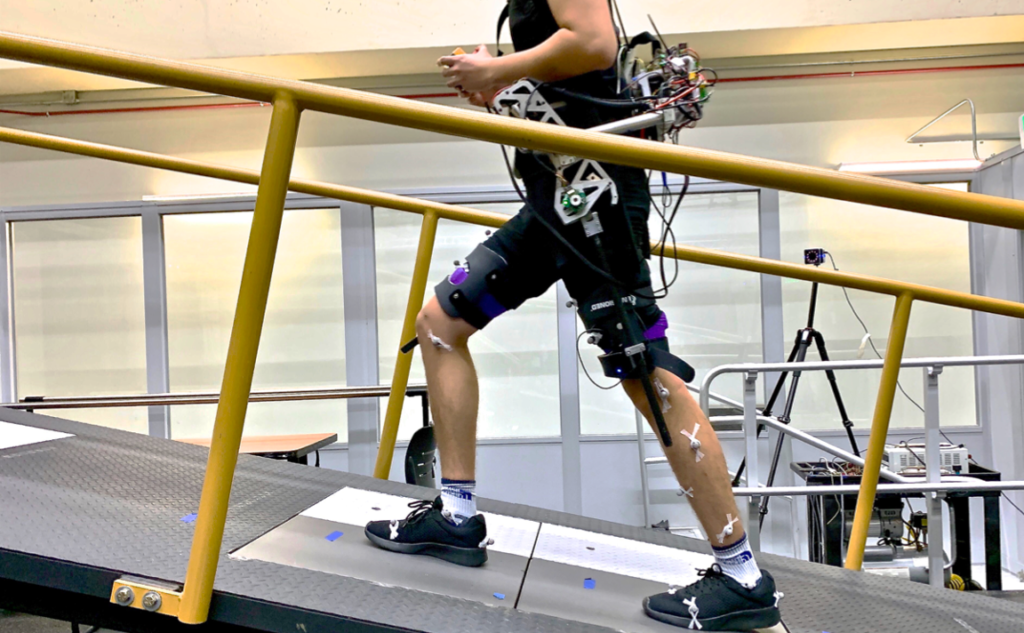Our autonomous powered hip exoskeleton augments human by providing a hip assistance across wide ranges of locomotion tasks. The device integrates human neural commands by measuring the surface electromyography (EMG) signals to control the device providing a more natural assistance to the user. We utilize these biological signals along with mechanical sensors from the device to better understand what the user intent is during different gait modes with different machine learning techniques (i.e. level-ground, stairs, and ramps). We primarily focus on translating this technology to more realistic settings such as outdoor terrain as well as to the clinical populations such as stroke survivors who experience limited mobility in community ambulation.
Lab members:
Dean Molinaro
Dongho Park
Justine Powell
Ben Shafer
Collaborators:
Dr. Geza Kogler
Dr. Stephen Sprigle
Related work:
Inseung Kang, Dean Molinaro, Srijan Duggal, Yanrong Chen, Pratik Kunapuli, Aaron Young, “Real-time gait phase estimation for robotic hip exoskeleton control during multimodal locomotion,” IEEE Robotics and Automation Letters, accepted, February 2021. (DOI)
Inseung Kang, Pratik Kunapuli, Aaron Young, “Real-Time Neural Network-Based Gait Phase Estimation using a Robotic Hip Exoskeleton,” IEEE Transactions on Medical Robotics & Bionics, Volume 2, Issue 1 (2020) pp. 28-37. (DOI)
Summer Lee, Claire Kilpatrick, Inseung Kang, Jeff Hsu, Lee Childers, Aaron Young, “Investigating the impact of the user interface for a powered hip orthosis on metabolic cost and user comfort: a preliminary study,” International Journal of Prosthetics and Orthotics, in press, 2019. (DOI)
Inseung Kang, Hsiang Hsu, Aaron Young, “The effect of hip assistance levels on human energetic cost using robotic hip exoskeletons,” IEEE Robotics and Automation Letters, Volume 4, Issue 2 (2019) pp. 430-437. (DOI)

